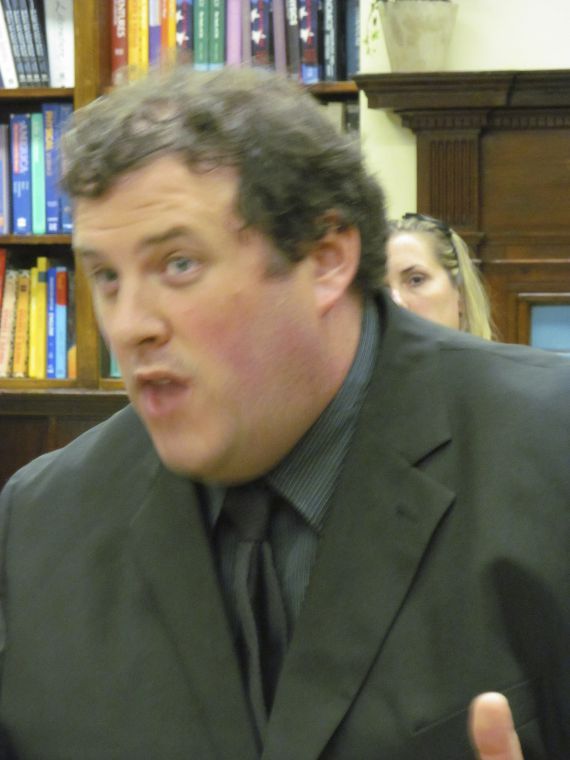
Herricks School District parents on Thursday protested the size of kindergarten classes and called for additional supervision, but received little encouragement for any immediate help from trustees.
Herricks school board President Jim Gounaris said the board has sought to be consistent with rising averages in class sizes “within certain parameters,” but said the school district can’t afford to hire more teacher aides.
“The problem that we have is our hands are tied in terms of where we can allocate money,” Gounaris said. “We all have to live with the [tax] cap and the ramifications of the cap.”
Herricks Superintendent of Schools John Bierwirth said the school board was forced to “suspend” its guidelines on elementary grade class sizes two years ago to meet the state-mandated tax cap. The guidelines had called for a maximum of 22 students in kindergarten classes, 24 students in first through third grade classes and 27 students in fourth through sixth grade classes.
Center Street parent Megan Maggio said her child’s kindergarten class of 24 students is frequently disrupted and she’s concerned about teachers’ ability to cope with medical emergencies.
“The whole class gets interrupted. And I’m not even going to estimate how much individual attention they’re getting,” Maggio said. “It’s a real detriment if there isn’t another adult in the classroom.”
“The teachers are really strapped,” added Christine Liu, a member of the Center Street School PTA.
Denton Avenue School parent Victoria Kleinschmidt said she transferred her son from his Center Street kindergarten class after he was injured in the class on his second day there “and no one noticed.”
“If we can’t solve safety [issues], there’s no really nothing else that can be done,” Kleinschmidt said.
Tyler Wood, a Center Street kindergarten parent who said he teaches in a middle school, said students’ experience in early grades is important to future educational experience. And he said teachers face a frustrating task with larger classes of younger students.
“When you’re making the work environment more difficult for that teacher, you’re going to risk burnout,” Wood said. “You’re going to make it harder for these people to teach these kids.”
One parent suggested parents could volunteer to assist kindergarten teachers.
Bierwirth said the presence of parent volunteers was acceptable as long as they don’t assume roles as teachers aides.
“Volunteers are always welcome,” Bierwirth said.
But, he said, there was little likelihood that the size of classes would be reduced in the future.
The school district has eliminated 62 teaching positions in the past three years, including 14 positions cut from the current budget.
Bierwirth said financial pressure on the school district is likely to increase, as the state comptroller’s office advised municipalities that their tax cap will be 1.66 percent in 2014. He said a cap for school districts hasn’t yet been set, but it’s likely to be the same 1.66 percent placed on municipalities.
The tax cap guideline represents one factor in a complex formula school districts calculate to determine annual spending limits.
Board Trustee Brian Hassan said six district kindergarten classes currently have 22 students, with two classes at 24 students, one class at 21 students and one class at 20 students.
Bierwirth said the numbers for elementary class registrations had been unpredictable. The board, he said, added five elementary school teaching positions after the district received more state aid than expected, but middle school enrollment rose by 53 students.
“We didn’t see this coming,” he said.
Gounaris said the board would review recent reports on class sizes but said he wasn’t hopeful the board could answer parents’ concerns about kindergarten conditions.
“It’s not good for anybody. We’re all in a bad place. We’ll do something if we can, but that’s a big ‘if’,” he said.
Preceding the discussion about kindergarten Herricks High School principal Jane Modoono and Herricks Middle School principal Joan Keegan made a presentation on introduction of the new Common Core curriculum at their respective schools.
Modoono said there is a “sense of urgency” about the Common Core among high school students who will be taking Common Core Regents exams in algebra and English this year. She said the Common Core English Regents for 11th graders is comparable to an AP English test.
“It’s a very rigorous exam,” she said.
Modoono said the Common Core approach requires a deeper understanding of course material, with a need for students to interpret what they read based on the content and the writer’s intent rather than their impressions of what they read.
“Kids need to construct their own meaning,” she said.
She provided examples of an 8th grade math problem, prose passage of T.H. White and a Shakespeare poem with multiple choice test questions.
“At this point, it doesn’t matter how you feel about Shakespeare’s sonnet. What matters is what Shakespeare was trying to say,” Bierwirth said.
Keegan said middle school students are being prepared for high school through long-form writing assignments. Sixth graders are required to do research papers in different subjects and eighth graders will be assigned research papers in their English classes.
“We’re really trying to tie writing to [different] disciplines,” she said.
Bierwirth said students’ test results from NWEA assessments aligned with the Common Core to gauge what areas students need to work on in math and English Language Arts.
“Our focus will be where they need to be in high school and by the time they graduate,” he said.






